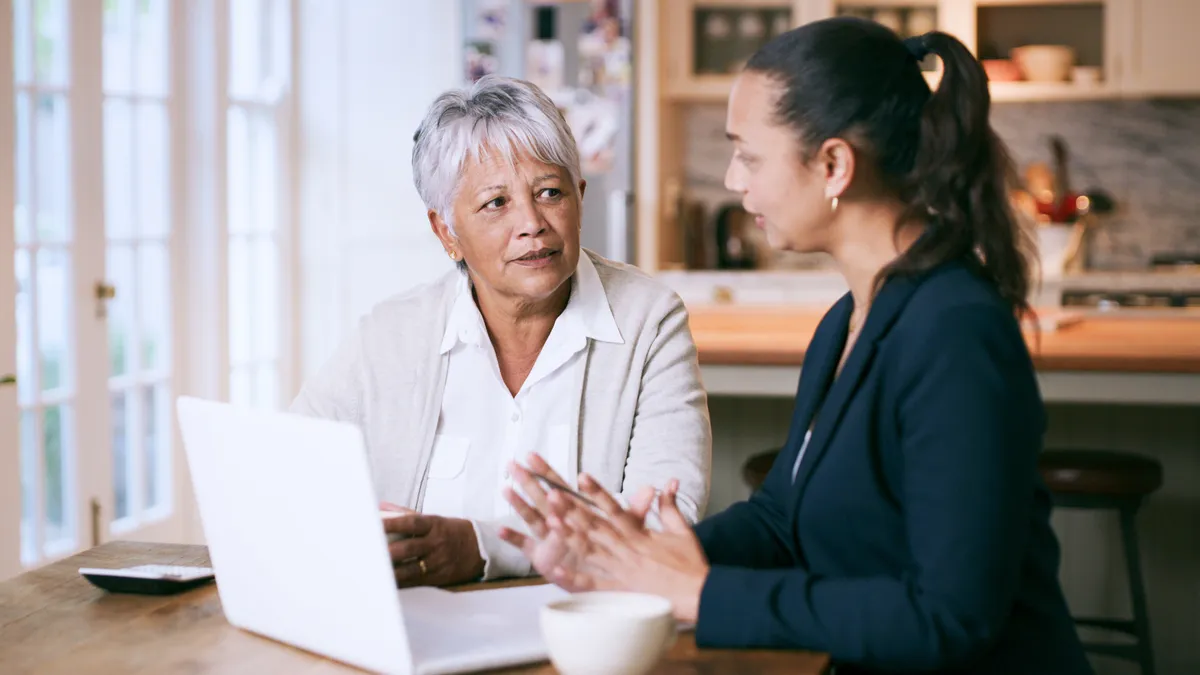Subverting stereotypes about where knowledge and wisdom resides, the “reverse mentoring” model positions junior employees to mentor senior employees. Since 2011, Cisco has run a such a program, joined by the likes of Ernst & Young, PwC, Unilever, P&G, Heineken, the Latin American headquarters of CitiGroup and ditto HP. Beyond tech and manufacturing, there’s a precedent for business leaders in the construction lane and at insurance companies also adopting reverse mentoring into its L&D initiatives.
What do these programs have in common? Typically, younger employers are getting their older colleagues hip to new technological processes and progress in social justice movements. It’s a way to unite generations while keeping employees of all ages engaged. “Nobody likes to feel stagnant within an organization,” said Lydia Frank, marketing VP and career expert at HR mentoring software company Chronus.
Moreover, as layoffs and hiring freezes ripple across industries, Frank suggested that reverse mentoring specifically is a way to prevent brain drain at a company. “Regardless of what happens with the current economy, there's going to be a set of employees that [are] staying with your organization — whether you're still growing, whether you're planning layoffs, whatever it is,” she said. “The employees that are standing [will be] propelling your business forward and need to continue to feel invested in.”
Reverse mentoring programs can also mitigate intergenerational prejudice, Maggie Wooll, a former research lead at Deloitte, wrote in an essay for BetterUp, where she is managing editor.
“Older colleagues might view millennials as spoiled and entitled. And younger team members may think baby boomers are resistant to change. With Gen Z entering the workforce, additional generational stereotypes are likely to form,” Wooll continued. “Reverse mentoring can help break down these stereotypes and bridge the generation gap… Embracing the ideas of people of all ages can make your company stronger and more resilient.”
HR managers should note that the U.S. Equal Employment Opportunity Commission audited discrimination claims and found that federal agencies with fewer age complaints generally had higher perceived inclusion in the workplace and higher rates of job satisfaction.
Don't you believe that anybody can learn from anybody? There are good ideas that come from anywhere and everywhere.

Lydia Frank
Marketing VP and career expert at Chronus, an HR mentoring software company
As one might imagine, with millennials and Gen Z cementing their status as digital natives, multigenerational learning programs often center around technology. (By the way, employment law experts discourage the use of “digital native” in job listings, as it can be discriminatory against Gen Xers and Baby Boomers.)
In her own professional experience, Frank has also seen reverse mentoring programs prioritize technology upskilling for older employees. For example, an employee who “has been on the job for decades and they're bringing so much wisdom and experience to bear, but they don't necessarily have the newest, greatest kind of technical skill” could benefit, Frank said.
The push to close the tech gap for older workers is poignant; in 2022, an IBM executive made waves for his discriminatory use of the term “dinobabies.” In speaking about the IBM lawsuit, an HR analyst told HR Dive that the tech industry is especially susceptible to ageism and blatantly embraces “youth bias.” Similarly, in a February 2022 report from Resume Builder, 38% of respondents in the hiring sector admitted to ageism while reviewing resumes. The reasons they cited were imminent retirement (37%) and lack of experience with technology (37%).
Another common reverse mentoring topic is diversity, equity and inclusion, and the nuances of those issues, including cultural awareness, ranging from gender identity to other social justice issues, Frank said. Younger mentors can fill in co-workers who “grew up in a certain time or certain set of circumstances, and maybe aren't as culturally aware about how things have shifted,” she explained.
The experience is useful to both parties. MaameYaa Kwafo-Akoto, an Allen & Overy senior lawyer, shared her reverse mentoring experience with Financial Times; she said she gained greater perspective on upper-level management and how her firm operates internationally. In turn, she said, she sought to help her older, White male colleague “understand the challenges ethnic minorities, working mums and people from working-class backgrounds face.”
“The workplace has really changed over time and the expectations of employees are different, in terms of what they expect from their leadership,” Frank said.
Along with cementing topics of discussion, HR folks should be diligent about following up at every stage of the program. In the mentoring space, one mistake Frank has seen is that employers drum up a program, announce it and “expect all the dominoes to fall into place.” People teams need to continue to promote these mentorships, “rather than letting them happen organically,” she said. “Because anything that happens organically can also fall off organically.”
One concern HR pros might have is how to frame this program. In LiveCareer’s Aug. 3 multigenerational workplaces report, 81% of respondents — which comprised Gen Zers, millennials, Gen Xers and baby boomers — said it’s difficult to report to a manager or supervisor that’s younger than them. Arguably, positioning younger employees as mentors could be read as favoritism and the kind of ageism that L&D professionals are aiming to combat. Frank’s tip for dissolving these worries is to emphasize empathy and understanding, and that all people can learn from each other, despite their differences.
“Don't you believe that anybody can learn from anybody?” Frank said. “There are good ideas that come from anywhere and everywhere, and we want to ensure that those ideas are flowing back and forth.” In that same vein, the wisdom held by older employees is invaluable. “They can pass down institutional knowledge to people coming into the organization, to get them up to speed,” Frank told HR Dive.
“People are naturally curious; they want to learn, they want to grow,” she continued. “It's about giving them the opportunity to do so.”






















